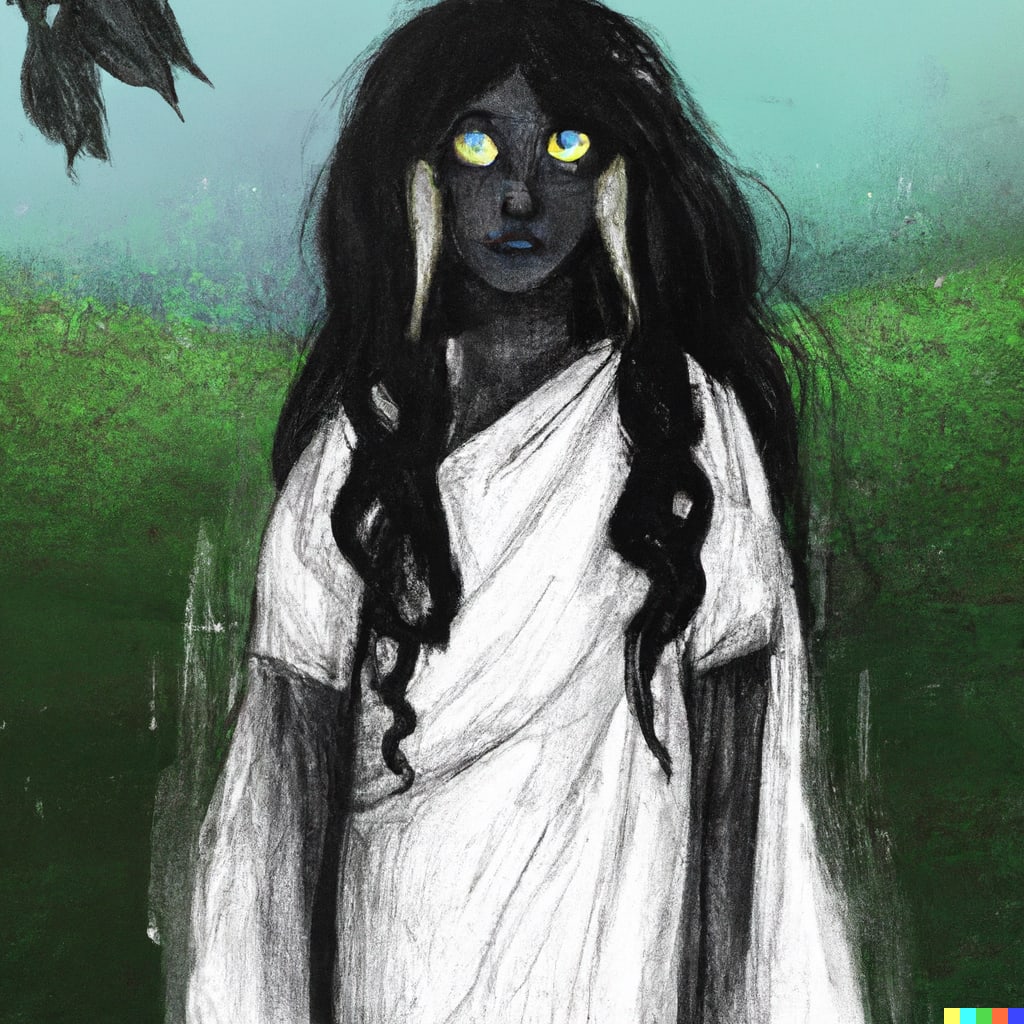The Curse of the Koh-i-Noor: A Diamond's Dark Legacy
"From Maharaja Ranjit Singh to Queen Victoria: The Haunting Tale of an Enigmatic Gemstone"

In the heart of London, there lies an ancient curse that has plagued generations. It is said to be connected to one of the most precious gemstones in the world: the Koh-i-Noor diamond. The legend goes that whoever possesses this stone shall face its wrath. Many have tried to keep it safe, but all have failed.
Long ago, in the royal courts of India, the Koh-i-Noor diamond found its first home. The gem was believed to bring immense power and prosperity to its owner. However, it came with a dark side, an ominous history that whispered of curses and tragedy.
As the diamond changed hands among Indian rulers, it was said that those who possessed it would witness their fortunes rise, but their lives would be marred by sorrow and suffering. Battles were fought, empires were won and lost, and blood was spilled in pursuit of this coveted gem.
Centuries passed, and the diamond eventually found its way to the British Empire during the colonial era. The British East India Company seized the Koh-i-Noor, adding it to the treasures of the Crown. Little did they know that they had also inherited a curse that would haunt their monarchy for generations to come.
In London, the diamond was placed in the Tower of London, alongside the British Crown Jewels. There, it gleamed with a malevolent sparkle, catching the eye of countless visitors and dignitaries who marveled at its beauty. But beneath its lustrous surface lay a foreboding presence that could not be denied.
The curse of the Koh-i-Noor was whispered among the royals and their advisors, a secret fear that each generation tried to suppress. The diamond brought prosperity to the British Empire, but it also brought tragedy to the lives of the monarchs who possessed it. Marriages crumbled, reigns were cut short, and misfortune followed in the wake of the diamond.
Queen Victoria, who wore the diamond proudly, saw her beloved husband, Prince Albert, succumb to an early death, casting a shadow over her long and sorrowful widowhood. The curse seemed to spare no one, not even the most powerful.
Generations of British monarchs continued to face personal trials and tribulations, all while the Koh-i-Noor diamond gleamed in the Tower, a silent witness to their struggles. Despite the curse, the gem remained a symbol of the British Empire's might and dominion over far-flung lands.
As time passed, whispers of the curse grew louder, and debates raged within the royal circles about whether to keep the diamond or relinquish it. Some believed that returning it to its place of origin might break the curse, but the idea of letting go of such a priceless treasure was a contentious one.
The legend of the Koh-i-Noor's curse became entwined with the history of the British monarchy, a haunting reminder of the price paid for power and wealth. The diamond continued to be displayed in the Tower of London, a testament to the enduring allure of the legend and the unbreakable grip of the curse.
And so, the story of the Koh-i-Noor diamond and its malevolent curse endures, a tale of opulence and tragedy that spans continents and centuries. It serves as a warning to those who seek to possess the world's most coveted treasures, for the price of such riches may be higher than one can imagine.
The first recorded owner of the Koh-i-Noor was Maharaja Ranjit Singh, who ruled over the Sikh Empire in the early 19th century. He believed that possessing this diamond would bring him power and wealth beyond measure. However, he soon discovered that the curse was real.
One night, as he slept, Ranjit Singh had a terrible nightmare. In his dream, he saw the Koh-i-Noor glowing with an eerie light, surrounded by dark shadows that seemed to move with sinister purpose. When he awoke, he found himself covered in sweat and trembling uncontrollably. From that moment on, his life began to unravel.
Ranjit Singh's once-steady rule over his empire became marked by turmoil and internal strife. His trusted advisors turned against him, and whispers of rebellion echoed through the palace halls. It seemed as though the dream had unleashed a malevolent force that sought to tear his kingdom apart.
As the years passed, Ranjit Singh's health deteriorated rapidly. His body weakened, and he suffered from a series of debilitating illnesses that defied medical explanation. No cure could alleviate his suffering, and the once-mighty Maharaja found himself reduced to a shadow of his former self.
In a desperate attempt to break the curse, Ranjit Singh consulted with wise men and mystics from across his empire. They performed rituals, recited incantations, and offered sacrifices to appease the malevolent spirit that haunted the diamond. Yet, the curse persisted, and Ranjit Singh's agony only deepened.
The Maharaja's family, too, bore the brunt of the curse's wrath. His beloved wife, Rani Jindan, fell into a deep melancholy, her spirit broken by the constant tragedies that befell their family. Their children faced misfortune after misfortune, and their once-prosperous household was plunged into despair.
In the end, Maharaja Ranjit Singh succumbed to his ailments, his once-mighty empire weakened and fractured. As he lay on his deathbed, he whispered to those gathered around him, "Beware the Koh-i-Noor. Its beauty hides a malevolent spirit that seeks to destroy those who possess it."
With his death, the diamond passed into the hands of his successors, and the curse continued to cast its long, dark shadow over their lives. The story of Ranjit Singh's ill-fated encounter with the Koh-i-Noor diamond became a cautionary tale, a chilling reminder of the curse's enduring power.
The diamond would go on to have a tumultuous journey through history, changing hands among various rulers and nations, each one touched by the legend of the curse. The Koh-i-Noor's tale of tragedy and misfortune would be retold and remembered for generations to come, a testament to the mysterious forces that can be unleashed by the world's most coveted treasures.
Ranjit Singh's empire fell into decline, and he became increasingly paranoid and unstable. His once loyal subjects turned against him, and eventually, he was forced to flee his kingdom. Some say that the curse drove him mad, while others claim that he simply lost touch with reality. Whatever the case may be, the end result was the same: tragedy and despair.
Over the years, many other owners of the Koh-i-Noor suffered similar fates. One British monarch, Queen Victoria, received the diamond as a gift from her husband Prince Albert. She too experienced nightmares and strange occurrences after acquiring the stone. Her reign was marred by scandal and controversy, and she died alone and unhappy.
As Queen Victoria's successors inherited the diamond, they too faced the ominous effects of the curse. King Edward VII, who wore the Koh-i-Noor as part of his coronation regalia, found his reign overshadowed by political strife and unrest. He passed away prematurely, leaving his son, King George V, to grapple with the pressures of a rapidly changing world.
King George V, aware of the legend surrounding the diamond, decided to have it re-cut in the hopes of breaking the curse's hold. The diamond's size was reduced, and it was set into the Crown of Queen Mary, but the curse's grip remained unbroken. Troubles continued to haunt the British monarchy.
World War I and its devastating consequences weighed heavily on King George V and his family. The curse of the Koh-i-Noor seemed to linger, casting a pall over their reigns. The diamond was seen as both a symbol of British imperial power and a harbinger of misfortune.
As the decades passed, the diamond remained in the possession of the British monarchy, passed down from one generation to the next. It was displayed proudly, but its presence was a constant reminder of the tragedies that had befallen those who had owned it.
The legend of the Koh-i-Noor's curse persisted, whispered among the corridors of power and beyond. People wondered whether the diamond truly held an otherworldly malevolence or if it was simply a tale born out of coincidence and superstition. Yet, the allure of the diamond was undeniable, and its story continued to captivate the imaginations of those who gazed upon its brilliance.
The Koh-i-Noor remained a symbol of beauty and despair, a testament to the enduring power of legends and the mysteries that shroud the world's most coveted treasures. Its curse, whether real or imagined, had left an indelible mark on the history of those who possessed it, a reminder that great wealth and power often come at a grave cost.
Today, the Koh-i-Noor remains in the possession of the British Crown Jewels, where it continues to exert its mysterious influence. Visitors report feeling uneasy or even terrified when they approach the display case where the diamond is kept. Some claim to hear whispers or see ghostly figures lurking nearby. Others swear that they felt a sudden chill or sense of dread wash over them as they gazed upon the glittering gem.
Despite these warnings, some still seek to possess the Koh-i-Noor for their own gain. They believe that they can control or even harness the curse's power for their benefit. But those who do so often find themselves facing unforeseen consequences. Their lives spiral out of control, marked by misfortune and disaster.
The allure of the diamond remains strong, and it continues to be a symbol of wealth and power. However, the legend of the curse serves as a chilling reminder that the pursuit of material riches can come at a grave cost. The Koh-i-Noor's enduring mystique and the tales of its curse have made it one of the most famous and enigmatic gemstones in the world.
As the diamond rests within its secure display case, it silently observes the passing of time and the curious souls who come to glimpse its radiant beauty. The legend of the Koh-i-Noor endures, a testament to the enduring power of myth and the fascination of the unknown. And so, the diamond's story continues, intertwined with the histories of those who have possessed it, a reminder that some treasures are best admired from a safe distance, lest they bring with them a curse too great to bear.
In conclusion, the Koh-i-Noor diamond carries with it a legacy of darkness and destruction. Its curse seems destined to continue until someone finally breaks the chain and sets the gemstone free. Until then, it remains a reminder of the dangers of greed, ambition, and hubris. Let us hope that future generations heed this cautionary tale and avoid repeating history's mistakes. The Koh-i-Noor stands as a testament to the enduring power of legends, reminding us that even the most beautiful and coveted treasures can conceal a malevolent force that should not be taken lightly.
About the Creator
Fathima Raheema
As a seasoned writer, your captivating prose has entranced readers worldwide. Your unique style blends vivid imagery with raw emotion, drawing inspiration from your diverse experiences. storytelling,






Comments (1)
Great job! Very Gazoogabloga and scary!